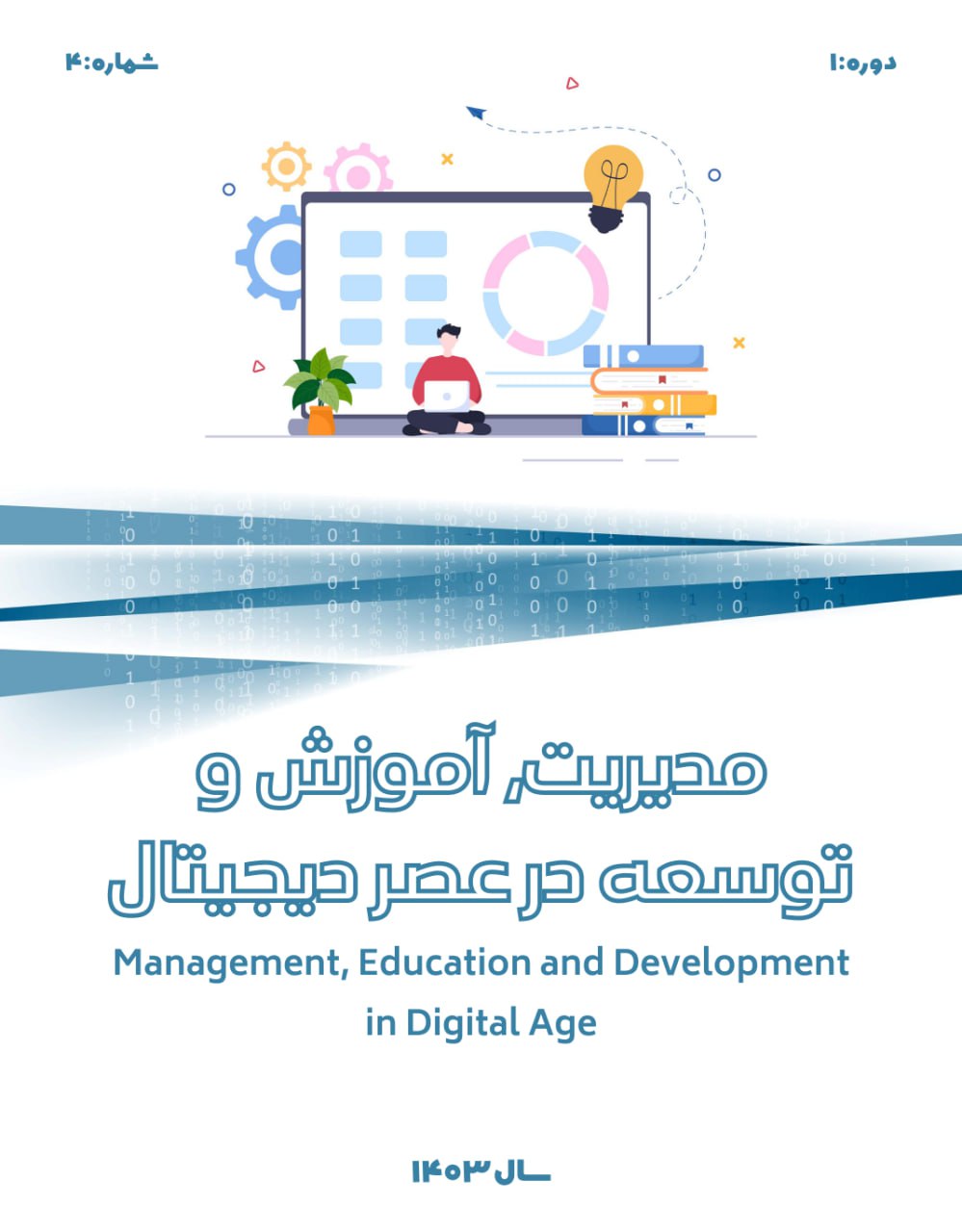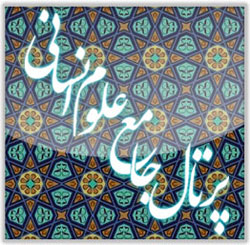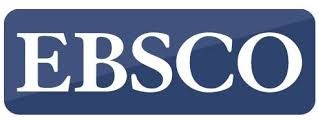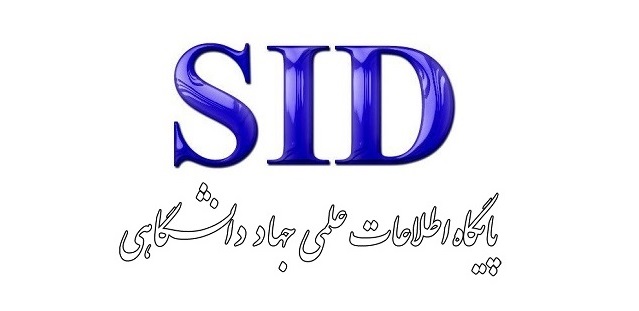انگیزههای اقتصادی و سیاسی مؤثر بر جذب حداکثری مخاطبان برنامههای سیاسی تلویزیون عراق
کلمات کلیدی:
انگیزه, اقتصادی, سیاسی, مخاطب, برنامه سیاسی, تلویزیون, عراقچکیده
هدف این پژوهش بررسی انگیزههای اقتصادی و سیاسی مؤثر بر جذب حداکثری مخاطبان برنامههای سیاسی تلویزیون عراق است. این مطالعه با رویکردی آمیخته (کیفی ـ کمی) و به روش توصیفی-پیمایشی انجام شد. در بخش کیفی، مصاحبههای ساختاریافته با ۱۴ نفر از خبرگان حوزه تلویزیون و برنامههای سیاسی و اقتصادی عراق صورت گرفت و محتوای آن تحلیل گردید. در بخش کمی، جامعه آماری شامل ۸۰۰۰ نفر از مخاطبان برنامههای سیاسی تلویزیون عراق بود که بر اساس جدول مورگان حجم نمونه ۳۸۳ نفر تعیین شد. دادههای اولیه با پرسشنامهای برگرفته از یافتههای بخش کیفی گردآوری شد و روایی محتوایی توسط خبرگان و روایی صوری از طریق تأیید متخصصان ارزیابی گردید. پایایی ابزار با آلفای کرونباخ بررسی شد (عوامل اقتصادی 0.73 و عوامل سیاسی 0.87). دادهها با نرمافزارهای SPSS22 و SMART PLS تحلیل شدند و تحلیل عاملی تأییدی برای شناسایی و اعتبارسنجی مؤلفهها به کار رفت. نتایج نشان داد انگیزههای اقتصادی متعددی از جمله آگاهی از تأثیرات سیاستهای اقتصادی بر زندگی روزمره، کاهش ریسک سرمایهگذاری، ارزیابی آثار تصمیمات دولت بر اشتغال، و سطح حمایت از کسبوکارهای کوچک و متوسط در جذب مخاطبان نقش دارند. همچنین انگیزههای سیاسی شامل تمایل به دریافت اطلاعات دقیق و رسمی درباره تحولات سیاسی، تحلیل رویدادهای قبل و بعد از بحرانها و دسترسی به ابزارهای درک و کنترل تغییرات اجتماعی و سیاسی شناسایی شد. مدلهای مفهومی تدوینشده توانستند واریانس قابل توجهی از متغیر جذب حداکثری مخاطبان را تبیین کنند (ضریب تعیین برای عوامل اقتصادی 0.984 و برای عوامل سیاسی 0.956). درک و پاسخ به انگیزههای اقتصادی و سیاسی مخاطبان میتواند استراتژیهای رسانهای مؤثرتری برای افزایش جذب و حفظ بینندگان برنامههای سیاسی در عراق فراهم آورد.
دانلودها
مراجع
Amiri Siyahuyi, R., & Abbasi, S. (2017). Analysis and Investigation of Strategies for Attracting Audiences in the Theaters of Bandar Abbas with Multi-Criteria Decision-Making Techniques from the Audience's Perspective. Cultural Research Journal of Hormozgan, 14. https://rdch.ir/article-1-217-fa.html
Benjamin, B. A. (2021). New Screen Economies and Viewing Paradigms: The Ethics of Representation in Delhi Crime. Open Philosophy, 5(1), 67-74. https://doi.org/10.1515/opphil-2020-0162
Eskandarian, G., Jafarzadeh Pour, F., & Zamani, S. (2020). Typology of Cultural Consumption Patterns Among the Youth Generation. Scientific Journal of Cultural Studies, 4, 1-30. https://socialstudy.ihcs.ac.ir/article_5948.html
Farghani, M. (2019). Conditions and Processes Affecting the Consumption of Political Entertainment Programs Among Young Audiences. Quarterly Journal of Media and Culture, 9(1), 255-291. https://civilica.com/doc/1137416/
Farghani, M., & Moozani, K. (2017). Structural and Content Typology of Political Entertainment Programs on Manoto, Voice of America, and Islamic Republic of Iran Broadcasting. Quarterly Journal of Communication Research, 24(3), 60-41. https://cr.iribresearch.ir/article_28661.html
Fatma, T. (2019). Politics of Culture and Culture of Politics on Indian Television News: A Frame Analysis of Hindi Television News Debates in India. Romanian Journal of Communication and Public Relations, 21(3), 37-50. https://doi.org/10.21018/rjcpr.2019.3.281
Guo, M., & Chan-Olmsted, S. M. (2015). Predictors of Social Television Viewing: How Perceived Program, Media, and Audience Characteristics Affect Social Engagement With Television Programming. Journal of Broadcasting & Electronic Media, 59(2), 240-258. https://doi.org/10.1080/08838151.2015.1029122
Homayoun, M., Yousefi, J., & Amini Harandi, R. (2015). Reasons and Motivations for Audience Attendance in Comedy and Popular Theaters in Tehran: An Ethnographic Approach. Quarterly Journal of Culture-Communication Studies, 16(31). https://www.jccs.ir/article_12598_en.html
Ibrahim, L. K. (2023). Political Stability and Its Impact on Macroeconomic Variables in Iraq After 2010. The International and Political Journal, 54, 409-436. https://doi.org/10.31272/ipj.54.17
Intyaswati, D., Ayuningtyas, F., Prihatiningsih, W., & Vidiyanti, M. O. (2022). Impact of Talk Shows and Variety Show Television Programs Viewership on Political Interest Among Indonesian College Students. Simulacra Jurnal Sosiologi, 5(1), 57-68. https://doi.org/10.21107/sml.v5i1.13964
Jenks, C. J. (2021). Mock News: On the Discourse of Mocking in U.S. Televised Political Discussions. Discourse & Communication, 16(1), 58-75. https://doi.org/10.1177/17504813211043719
Kim, K., Sung, H., Noh, Y., & Lee, K.-M. (2022). Broadcaster Choice and Audience Demand for Live Sport Games: Panel Analyses of the Korea Baseball Organization. Journal of Sport Management, 36(5), 488-499. https://doi.org/10.1123/jsm.2020-0311
Liang, L. (2015). Censorship and the Politics of Micro-Fascism. Television & New Media, 16(4), 388-393. https://doi.org/10.1177/1527476415573952
Lin, T. C. (2019). Examining the Typology and Effects of Audience Satisfaction Obtained from Multitasking TV and Smartphone. International Journal of Human-Computer Interaction, 35, 1672-1680.
Maciejewska-Mieszkowska, K. (2021). Public Television as a Factor Shaping Electoral Activity of Poles in National and Regional Elections. Regional Formation and Development Studies, 22(2), 99-111. https://doi.org/10.15181/rfds.v22i2.1481
Mohammadnejad, A., Jabari, A., & Shahmohammadi, M. (2021). Strategies for Enhancing Audience Trust in National Media. Scientific Quarterly Journal of National Security, 11(42), 178-143. https://ns.sndu.ac.ir/article_1722.html?lang=en
Omoera, O. S., & Ihekwoaba, I. L. (2022). A Comparative Study of Urban and Rural Reality Tv Viewership Patterns of Who Wants to Be a Millionaire in Nigeria. Telos Revista De Estudios Interdisciplinarios en Ciencias Sociales, 24(3), 799-818. https://doi.org/10.36390/telos243.21
Parsakia, K., Rostami, M., Darbani, S. A., Saadati, N., & Navabinejad, S. (2023). Explanation of the concept of generation disjunction in studying generation z. Journal of Adolescent and Youth Psychological Studies (JAYPS), 4(2), 136-142. https://doi.org/10.61838/kman.jayps.4.2.15
Parsakia, K., Rostami, M., Saadati, N., & Navabinejad, S. (2023). Analyzing the causes and factors of the difference between the girls of the generation Z and the previous generations in Iran from the perspective of social psychology. Psychology of Woman Journal, 4(1), 1-13. https://doi.org/10.61838/kman.pwj.4.1.1
Priyadarshini, A. (2024). Creating the Viewer: Market Research and the Evolving Media Ecosystem By JustinWyatt. Austin, TX: University of Texas Press. 2024. Pp. 288. $105.00 (Hbk). The Journal of Popular Culture, 57(5-6), 367-368. https://doi.org/10.1111/jpcu.13372
Ramachandran, S. (2021). Sensory Technology for Measuring Engaged Viewership of Broadcast Television Content. Avanca | Cinema(12). https://doi.org/10.37390/avancacinema.2021.a348
Roshandel Arbatani, T., & Zarei, M. (2019). Identifying and Ranking Factors Influencing the Decline of Viewers of the Islamic Republic of Iran Television. Quarterly Journal of Media, 30(1). https://jibm.ut.ac.ir/?_action=export&rf=idc&issue=10265&lang=en
Taylor, J. B. (2016). The Educative Effects of Extreme Television Media. American Politics Research, 45(1), 3-32. https://doi.org/10.1177/1532673x15600516
Tolou Asl, S. (2009). Socio-political crises and television media in Iran. Media Studies Quarterly, 6(2), 34-50.
Yousif, B., & El-Joumayle, O. A. M. (2024). Toward an Understanding of Economic Development in Post-2003 Iraq. Journal of Developing Societies, 40(4), 385-414. https://doi.org/10.1177/0169796x241281011
РЫЖОВ, И. В., Dzhodzhi, N. D., & Strukova, M. I. (2025). The Republic of Iraq's "Special" Relations With the U.S. As a Factor Restraining the Iraqi Ruling Circles in Their Efforts to Expand International Contacts. Международные Отношения(1), 15-25. https://doi.org/10.7256/2454-0641.2025.1.73108
دانلود
چاپ شده
ارسال
بازنگری
پذیرش
شماره
نوع مقاله
مجوز
حق نشر 2025 اسلام حسن جواد السعدی , علی رشیدپور, عادل عبدالرزاق مصطاف غریری, مهرداد صادقی (نویسنده)

این پروژه تحت مجوز بین المللی Creative Commons Attribution-NonCommercial 4.0 می باشد.









